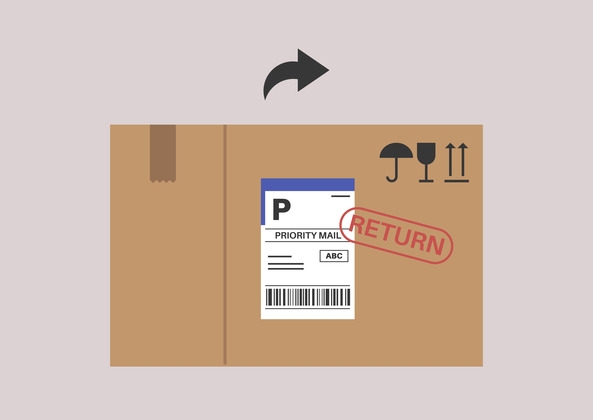Credit Memos: What They Are and How To Write One

Have you ever issued an invoice only to realize later that you need to make an adjustment? That’s what credit memos are for.
Credit memos are documents issued by a seller to a buyer that reduce the amount the buyer owes from a previously issued invoice. They help you handle invoice disputes and returns like a pro.
In this article, you’ll learn when to issue credit memos, the information they contain, and how to create and manage them effectively. By the end, you’ll be a credit memo expert with the know-how to keep your financial records accurate and up to date.
What Is a Credit Memo?
A credit memo—short for credit memorandum and sometimes called a credit note—is a tool for correcting invoices. When a seller needs to reduce the amount a buyer owes, they issue a credit memo to adjust the balance. This can happen due to a pricing error, a product return, or an incorrectly applied discount.
Think of a credit memo as the opposite of an invoice. While an invoice tells the buyer how much they originally owed, a credit memo tells them how much they no longer have to pay.
Credit memos are an essential part of the accounting process. They keep financial records accurate and make sure buyers aren’t overcharged. Without credit memos, it would be harder to correct errors and maintain transparency with customers.
RELATED ARTICLE — Invoice vs Receipt: Is an Invoice the Same as a Receipt?
What Are Credit Memos For?

As a business owner, there are several situations where you might need to issue a credit memo. Some of the most common reasons include:
- Product Returns. If a customer returns a product they purchased, you’ll need to issue a credit memo to adjust their balance. This is especially common in retail businesses.
- Pricing Errors. Mistakes happen. If you accidentally charge a customer too much, a credit memo can correct the error and maintain a good relationship.
- Discounts and Promotions. If you offer a discount or promotion after you’ve already sent an invoice, you can use a credit memo to apply the discount retroactively.
- Damaged Products. If a product arrives damaged or defective, you can use a credit memo to compensate the customer without the hassle of processing a full return.
- Cancellations. In service-based businesses, if a customer cancels a service they’ve already been invoiced for, you can use a credit memo to void the charge.
- Goodwill Gestures. Sometimes, issuing a credit memo is simply a way to show a customer you value their business. For example, if a shipment is delayed, you might offer a small credit as a gesture of goodwill.
In all these cases, the goal of the credit memo is to ensure the customer gets charged the correct amount and to maintain accurate financial records. By promptly issuing credit memos when needed, you demonstrate your commitment to customer satisfaction and transparency.
How Does a Credit Memo Work? Key Information To Include
When you issue a credit memo, including all the necessary information is vital. This helps your customers understand the adjustment and keeps your records clear and organized.
Here’s what to include in a credit memo:
- Credit Memo Number. Assign each credit memo a unique identifying number. This helps you and your customer keep track of the document.
- Original Invoice Number. Always reference the invoice number of the invoice the credit memo is adjusting. This is crucial for matching the credit to the correct original charge.
- Issue Date. Record the date you’re issuing the credit memo. This may be different from the date of the original invoice.
- Customer Information. Clearly list the name and contact details of the customer receiving the credit.
- Your Business Information. Include your company’s name and contact details to identify the issuer of the credit memo.
- Description of the Adjustment. Briefly explain why you’re issuing the credit, such as “return of defective product” or “pricing correction.”
- Amount of the Credit. Specify the total dollar amount you’re crediting to the customer’s account.
- Itemized Details. If the credit relates to specific products or services, list these individually with their quantities and prices.
- Payment Terms. Outline how the credit will be applied using labels like “credit to be applied to the next invoice” or “refund to be issued.”
- Authorized Signature. Consider including a signature from an authorized representative of your company to create a sense of legitimacy.
RELATED ARTICLE — How to State Invoice Payment Terms (with Example Wording)
How To Write a Credit Memo Step By Step

Now that you know what information to include in a credit memo, let’s walk through the process of creating one. While the exact procedure may vary depending on your accounting software or system, here are the main steps:
1. Gather Relevant Details
The first step in creating a credit memo is gathering all the necessary information. This is outlined in the previous section and includes:
- The original invoice number
- The customer’s information
- The reason for the credit
- The amount of the credit
- Any relevant product or service details
2. Prepare the Format and Content
Next, you’ll want to set up the document itself. If you’re using accounting software, it may come with a template you can use. If not, you can create your own using a word processor or spreadsheet program.
Start by adding your company logo and contact information at the top. Then, fill in the key details you gathered in step one. Be sure to proofread everything carefully to avoid any errors or confusion.
3. Ensure Compliance With Accounting Standards and Policies
Before finalizing the credit memo, double-check that it complies with relevant accounting standards and your own internal policies.
This may include:
- Ensuring you correctly record the credit memo in your accounting system
- Checking that the memo follows formatting requirements
- Getting approval from a manager or supervisor if necessary
- Verifying that the reason for the credit aligns with your company’s policies
By taking the time to ensure compliance, you’ll avoid headaches down the line and keep your financial records clean and consistent.
4. Send the Credit Memo to the Customer
Once the credit memo is complete and approved, it’s time to send it to the customer. You can do this by email, regular mail, or your accounting software’s customer portal.
Consider including a friendly note explaining the reason for the credit and thanking the customer for their business. This extra touch can go a long way in maintaining positive relationships.
5. Apply the Credit to the Customer’s Account
Finally, don’t forget to make it official by applying the credit to the customer’s account in your records. Depending on the reason for issuing the memo, this might involve:
- Adjusting the balance on the original invoice
- Creating a new line item in your accounts receivable
- Issuing a refund if the customer has already paid in full
By closely following these steps, you’ll create clear, professional credit memos. They’ll keep your customers informed and your business running smoothly.
Settling a Credit Memo
Once you’ve issued a credit memo, the final step is applying the credit to the customer’s account. There are a few ways to do this:
- Apply It to the Next Invoice. The most common method is subtracting the credit amount from the customer’s next bill. This is straightforward and ensures the customer sees how you’re delivering the credit. It’s especially useful if the customer makes recurring payments that you can adjust.
- Issue a Refund. If the customer pays their invoice before you can issue the credit, you’ll need to refund them the credit amount. You can do this by check, credit card refund, or online payment service.
- Holding for Future Use. Sometimes, customers may want to keep the credit on their account for a future purchase, similar to store credit. In this case, record the credit somewhere safe and apply it when the customer is ready to use it.
RELATED ARTICLE — What Is Invoice Reconciliation?
5 Tips for Avoiding Credit Memo Errors

Follow these tips to craft error-free credit memos and avoid common pitfalls:
- Establish a Consistent Format. Choose or create a standard template for your credit memos that includes all the necessary information. This ensures consistency and reduces the risk of forgetting important details.
- Double-Check Your Math. Always verify your calculations, especially for complex adjustments involving multiple products or services. A small math error can lead to big headaches.
- Get Authorization. Establish clear policies about who can issue credit memos and for which reasons. Unauthorized adjustments can cloud your record-keeping and lead to confusion.
- Match Memos to Invoices. Any time you issue a credit memo, compare it to the original invoice to make sure all the details match up.
- Communicate With Your Team. Make sure everyone in your organization understands your credit memo policies and procedures. Regular communication and training prevent misunderstandings and keep everyone on the same page.
By following these tips, you can issue credit memos with confidence. You’ll know your adjustments are accurate, authorized, and properly documented every time. While it might take some extra effort upfront, the payoff in clean books and satisfied customers is well worth it.
RELATED ARTICLE — How To Keep Track of Invoices & Payments
Invoice Management Software | Web & Mobile | Invoice Simple
Great credit memos start with great invoice tracking.
Get notified when your invoices are read and track when they are due. Keep a record of clients and track your monthly income with built-in reporting that can easily be shared with your accountant. Manage all your finances in one place with Invoice Simple.
Start Your First
Invoice Today
Create customized and professional
invoices and connect with clients
